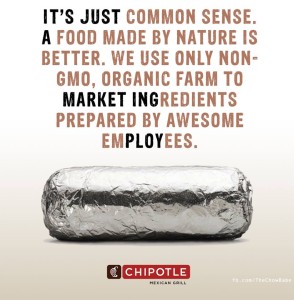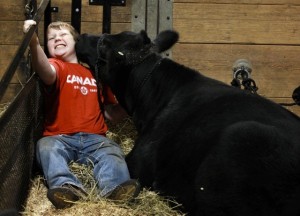A public health type asked me yesterday, what ever happened to those videos you made in 2002 that Food Network Canada made you take down, after showing them at a talk in Prince Edward Island, perhaps prompted by a Charlottetown Chinese food restaurant that was warned for unsanitary conditions in its washrooms and food premises.
 Since Amy hadn’t heard the story, here it is.
Since Amy hadn’t heard the story, here it is.
In 2004, my laboratory reported that, based on 60 hours of detailed viewing of television cooking shows, an unsafe food handling practice occurred about every four minutes, and that for every safe food handling practice observed, we observed 13 unsafe practices. The most common errors were inadequate hand washing and cross-contamination between raw and ready-to-eat foods.
The abstract is below.
After completing the initial research in 2002, I began writing about the topic, with snappy headlines like, Can TV cooks become food safety celebrities? One of my students at the time, Christian Battista, put together four, 3-minute greatest hits videos, depicting various practices we observed like cross-contamination and lack of handwashing. The videos were a hit.
Once the paper was published, it made headlines around the globe. Some folks at the Food Network in Canada gave me a call, and said they wanted to work with me and my lab, to enhance food safety on their shows.
I said sure.
I also kept showing the videos at my various public appearances.
And then the Food Network called again.
This time the folks at the other end were on a speakerphone — and there was a lot of them. Lawyers, I suspect.
The Food Network people said if I ever showed the videos again they would sue my ass.
But YouTube didn’t exist back then. And I’m in Australia now. Hmmm ….
Mathiasen, L.A., Chapman, B.J., Lacroix, B.J. and Powell, D.A. 2004. Spot the mistake: Television cooking shows as a source of food safety information, Food Protection Trends 24(5): 328-334.
Consumers receive information on food preparation from a variety of sources. Numerous studies conducted over the past six years demonstrate that television is one of the primary sources for North Americans. This research reports on an examination and categorization of messages that television food and cooking programs provide to viewers about preparing food safely. During June 2002 and 2003, television food and cooking programs were recorded and reviewed, using a defined list of food safety practices based on criteria established by Food Safety Network researchers. Most surveyed programs were shown on Food Network Canada, a specialty cable channel. On average, 30 percent of the programs viewed were produced in Canada, with the remainder produced in the United States or United Kingdom. Sixty hours of content analysis revealed that the programs contained a total of 916 poor food-handling incidents. When negative food handling behaviors were compared to positive food handling behaviors, it was found that for each positive food handling behavior observed, 13 negative behaviors were observed. Common food safety errors included a lack of hand washing, cross-contamination and time-temperature violations. While television food and cooking programs are an entertainment source, there is an opportunity to improve their content so as to promote safe food handling.
spotthemistake
 The U.S. Centers for Disease Control and Prevention’s Crisis and Emergency Risk Communication (CERC) program teaches you how to craft messages that tell the public what the situation means for them and their loved ones, and what they can do to stay safe.
The U.S. Centers for Disease Control and Prevention’s Crisis and Emergency Risk Communication (CERC) program teaches you how to craft messages that tell the public what the situation means for them and their loved ones, and what they can do to stay safe.









